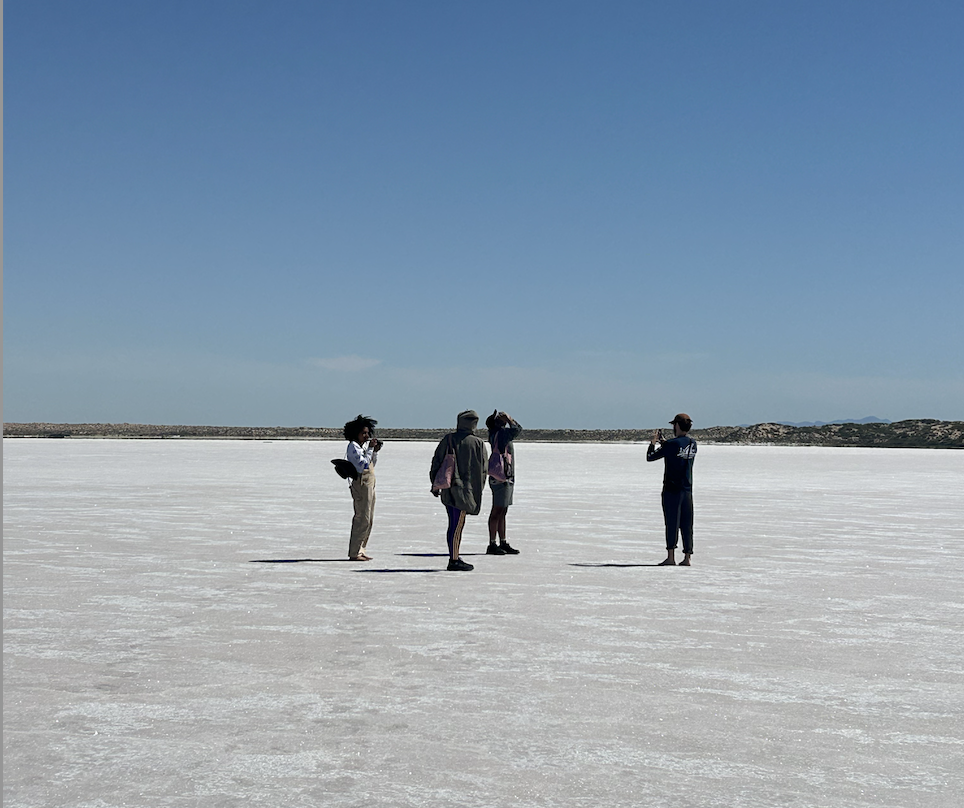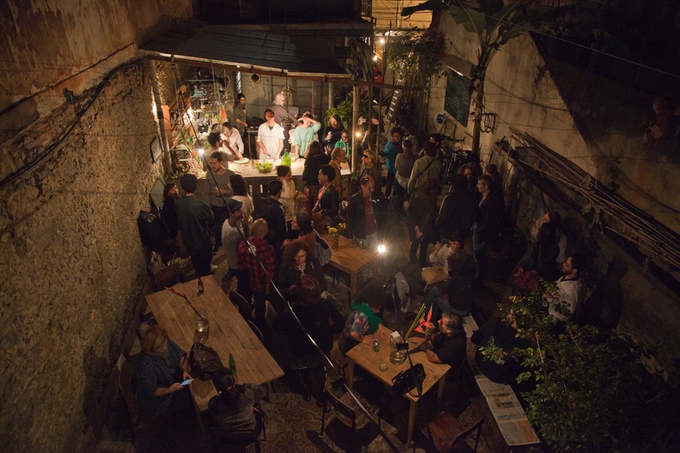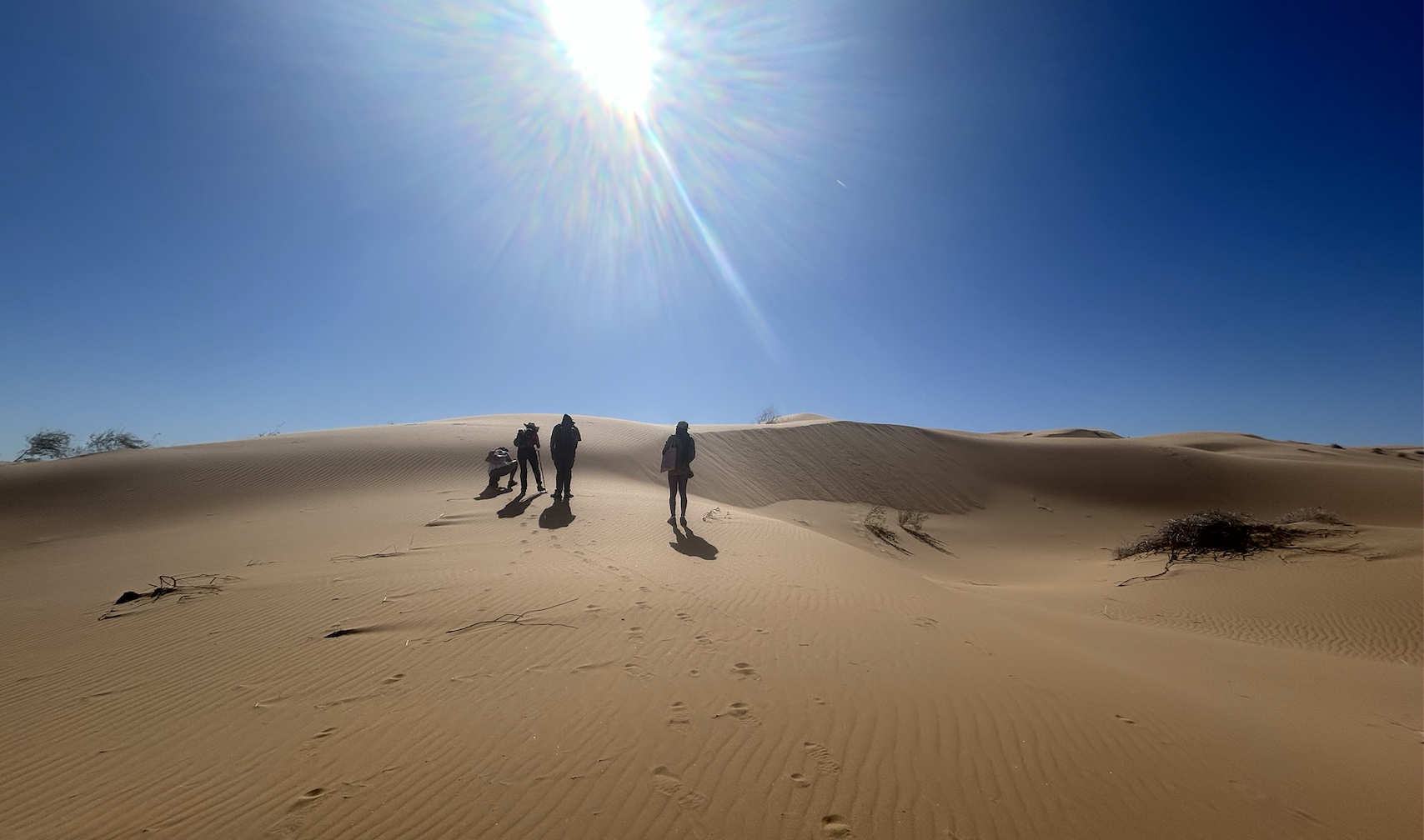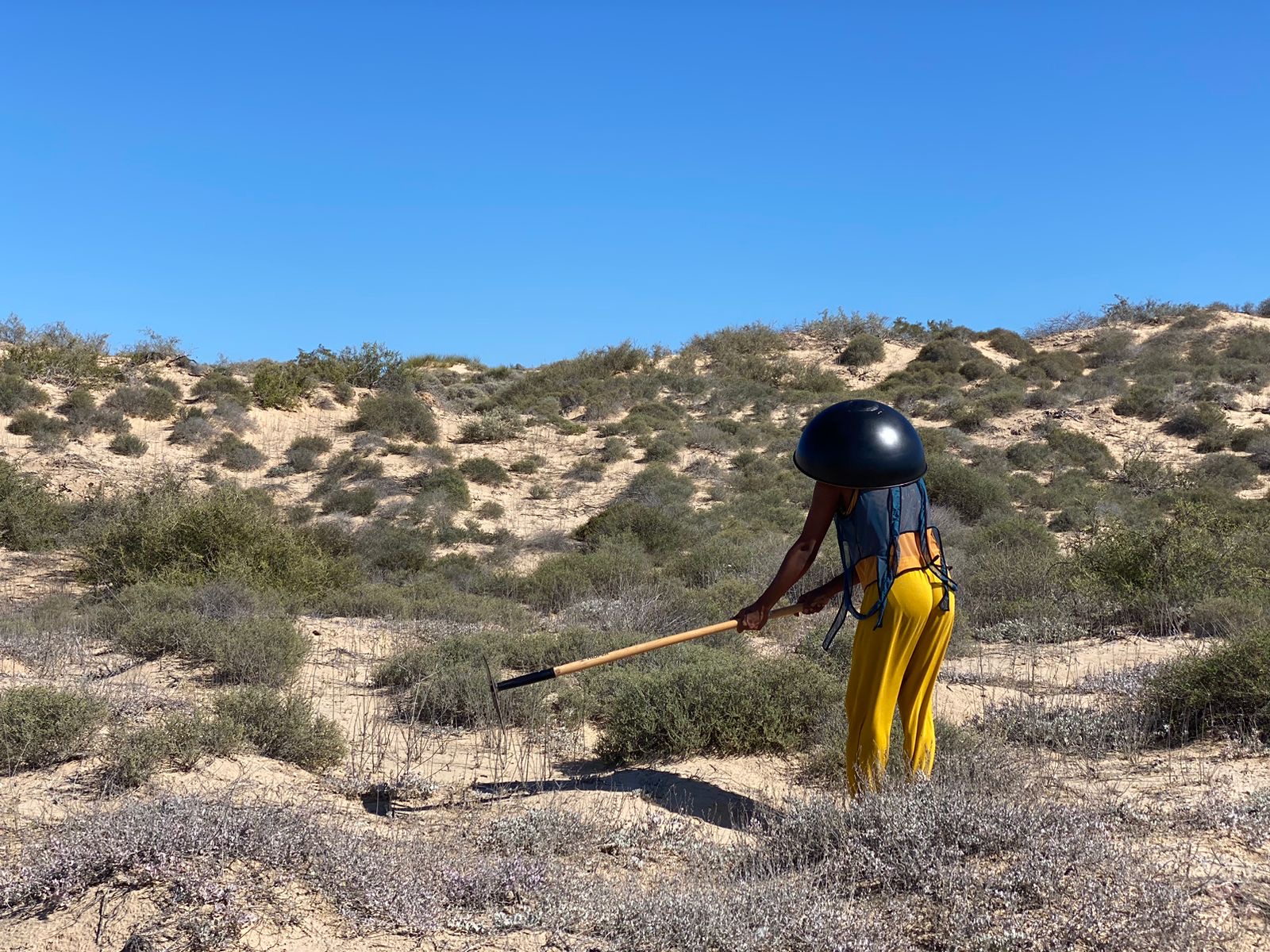
04.05.2024

It is necessary to cultivate the habit of transferring the issues that develop in certain areas of knowledge to provide them with perspective in relation to other systems of thought, disciplines and contexts. The complexity of such a feat requires making use of the countless resources available for critical thinking, following already known paths and strategies, as well as trying to invent other ways to do it. Genealogy of terms and practices, denaturalization of conceptual territories and tools of analysis, changes in spatial and temporal scales, review of the conditions of possibility, ethical implications, multiplication or criticism and confrontation of historical narratives. It is also the prerogative of thought to summon humor, courage and imagination. Such procedures are fundamental to uproot historically introduced discourses that have become established in the norm, contributing to understanding some violent mechanisms of power, oppression and submission, creating favorable conditions for the uninstallation of programs that are repressed and internalized in and by Western, Westernized and Westernizing societies.
The “art world” is extremely endogamous, flawed, and like many communities that enclose themselves in their particular hermeneutics and dynamics, it is incapable of perceiving and thinking about its limits, articulations and fetishizations outside of its restricted registers and domains. Artistic practices have been given the privileged place of differentiation, but they function through the imposition of standards of taste and market reserve, thus professing, in their varied sarcastic tones, a central role in the processes of normalization and segregation of the sensitive. Fluidity has facilitated its capture and regulation by the global institutions of financialization of speculative capital. Likewise, it is worth remembering that the art market is not internationally regulated and is therefore close to the trafficking of drugs, weapons, organs and people.
The “art world” is extremely endogamous, flawed, and like many communities that enclose themselves in their particular hermeneutics and dynamics, it is incapable of perceiving and thinking about its limits, articulations and fetishizations outside of its restricted registers and domains.

To talk about artistic residency, it is necessary to perform a contrast operation so as not to transmit a naive vision, as well as to try not to fall too much into performative contradictions when we attempt to carry out practices committed to the critical production of meaning.
Whoever talks about artistic residency talks about displacement. These programs, from their genesis, propose the mobility of arts professionals as a means to create favorable conditions for research in foreign contexts, literally promoting deterritorialization as a basic condition for creation. This occurs by providing temporalities different from those required by the current and widespread productivity acceleration system, present even in research and training centers such as universities, which should protect and expand the minimum conditions for thinking, including time, its non-activity and non-instrumentalization. These characteristics would serve for a more critical and collective functioning, so to speak, of artistic practices that privilege cooperation and exchange in a more direct and structural involvement with society and its various agents and communities, in the face of the lethargy of cynical and instrumentalized attitudes and the official bureaucracy that often does nothing more than guarantee the private interests of the institutions that legitimize art, such as public or private museums and cultural centers, auction houses, galleries and collectors.
It is necessary to cultivate the habit of transferring the issues that develop in certain areas of knowledge to provide them with perspective in relation to other systems of thought, disciplines and contexts.
This displacement has often been praised as a necessary tool and this is probably due to the power of change that comes with contextual displacement. We also know that, both for the financialization of transnational capital and speculative markets and for the unjust and segregated social organization of work, flow and flexibility are the lifeblood of business.

It is essential that we understand that mobility cannot be restricted only to the movement of bodies and objects from one point to another, since it encompasses and constitutes the most varied practices and phenomena, responding to local and global political, cultural, social, historical, economic and religious situations, producing subjectivities and building communities. Let us not forget that mobility can also occur through forced migration.
Artist-tourist
I hate travel and explorers
Sad Tropics, Claude Lévi-Strauss
Free movement on planet Earth may apply to money and goods, but it does not apply to human beings. If each nation-state carries with it a history of violence, it probably begins with the demarcation and imposition of borders, strongly guarded and defended, as well as the implementation of private property and private rights over territory. The possibilities of professional movement around the world are based on social and economic inequality, as well as political, cultural and religious conflicts and rivalries between countries and blocs. There is no specific international policy for the mobility of arts professionals around the world. Artist residency programs with an international scope that obtain visas for their participants are rare, and those that obtain work visas for their residents are almost non-existent. This situation restricts the possibility of participation for agents from contexts and countries that do not have diplomatic agreements, making it difficult, and in some cases, impossible, to issue certain visas, which allow them to cross borders.
The possibilities of professional movement around the world are based on social and economic inequality, as well as political, cultural and religious conflicts and rivalries between countries and blocs.
In terms of geopolitics of mobility in the arts, it is necessary to operate beyond the traditional axes of professional movement, which very often reproduce colonial flows and narratives. It is necessary to modify the excessive unidirectionality of these flows, since it is not only a matter of multiplying destinations, as tourism agencies do very well, but of developing reciprocal relationships, which allow each place to function as a center, a place of arrival, reception and departure; reterritorialization. Not only a starting point for traveling, but above all a starting point as a perspective to acquire sufficient autonomy to be established as a possibility of construction and co-authorship of self-narratives, without the need to continually revere and subsume to the dominant hegemonic historiographic narratives.
There is no specific international policy for the mobility of arts professionals around the world

Longing maloca1
Reside: from the Latin residere. Regular verb, circumstantial transitive and indirect transitive. 1. To live, to establish oneself in a place where one sleeps regularly, to stay, to inhabit. 2. To be, to find oneself. Or, figuratively, 3. The power resides in the people. It is in art where the problem lies.
How to think about artistic residencies when the real estate market and developers control and segregate the occupation of cities in relation to purchasing power?
How to qualify the noun “residency” in a Latin America that refuses to demarcate indigenous territories and questions the right to housing of indigenous peoples in their territories of residence and existence, and that do not legally precede the formation of American nation-states? How can we not relativize the notion of residency in the face of such contradictions related to housing? How, if we do not consider the continuous and accelerated processes of gentrification, to which art is so often involuntarily allied, that cross cities and that operate through constant economic expulsions and the violent removal of people from their homes by the legitimized armed arm of the governments and the interests of various private sectors: the police? How to think about artistic residencies when the real estate market and developers control and segregate the occupation of cities in relation to purchasing power?
Perhaps, it would be interesting to start thinking seriously about each residency as something occasional and circumstantial, because in reality, despite establishing their residence many times in the same place, we are all part of nomadic peoples, and this has a way of coming back, even if it is in the dreams that we don’t remember.

It is not new that travels are present in the imagination of artistic endeavor and perhaps we can even say that residencies were already, in a certain way and to a certain extent, prefigured in the custom of patrons or rich and powerful figures of receiving their domains, artists, scientists and thinkers, creating favorable material conditions for the development of work and research, as well as protecting some of these figures who were often persecuted and at risk of death, for their ways of life and defended ideas. Perhaps, thinkers needed protection more than artists. It seems that the artistic residency inherits and promotes a protected and privileged situation so that agents from different disciplines can develop their work, with a certain distance from daily dynamics, in other spaces and temporalities, and often in contact with other professionals.
Res Artis, an association dedicated to the dissemination of residency programs around the world, has more than 490 initiatives whose activities are focused on more than 70 countries. Transartists speaks of approximately 1,400 residencies spread around the world. In the vast majority, residency programs offer a wide range of activities for the local community and visitors. Production of works, organization of exhibitions, agency and supervision of medium and long-term research, and implementation of programs aimed at continuing education such as seminars, courses and workshops, also including the production and release of publications.

In South America, we could list a hundred of these initiatives, such as Lugar a Dudas, Taller 7, El Parche, El Kiosko, Flora and Residencia en la Tierra, in Colombia; Centro de Investigaciones Artisticas, the extinct but important El Basilisco e la Ene, in Buenos Aires, Argentina; in Brazil, the pioneering CAPACETE Entretenimentos, in Rio de Janeiro and Sao Paulo; also in Sao Paulo, Pivo, Casa Tomada, FAAP – Edificio Luthecia, Casa das Caldeiras, Phosphorous and Como_clube, which in January 2014 began an indefinite period of nomadism; Sacatar, in Itaparica, Bahia; JACA, in Belo Horizonte, Minas Gerais; CRAC, in Valparaiso, Chile; or Beta Local, in San Juan, Puerto Rico.
In principle, residency programs are not independent because at their core is the need for exchange, and in addition, they are generally funded by governments and public and private foundations. Residencies, in general, are ventures of individuals or small groups that seek to invent their contexts and communities through hospitality and coexistence. These are people who are often tired of the monotony of traditional artistic institutions, who believe in other ways of functioning, even without knowing exactly what they are, and who always work in collaboration and self-management for this purpose, seeking an autonomy that must be understood as power of decision and choice, establishing a continuous field of negotiation and compromise.
In principle, residency programs are not independent because at their core is the need for exchange, and in addition, they are generally funded by governments and public and private foundations
It is not about reproducing a mapping of existing residencies, nor about carrying out an exhaustive study of the literature published on the subject. Artistic residencies are not something new and much less something that has not been elaborated, discussed and instituted. Knowledge is given through experience and the exchange of experiences, we cannot simply do without it and discard the ground we want to tread. At the same time, it is not possible to define what an artistic residency is or could be. The construction of an argument from the authority that regulates actions and imagination is, at the very least, uninteresting for thought. What is interesting is to outline a contribution to understanding and reflection based on some mechanisms and functionings present in artistic residencies; the paradoxes and contradictions, especially in the articulation and examination of their powers in the invention of devices, formation and production, research, discussion, documentation and dissemination of artistic practices, characteristics that can complicate and strengthen contexts, practices, agents and agencies.
The diversity of residency programs around the world increasingly requires certain qualifications. Residencies for research, production, writing, and – why not? – also vacationing. The word “residency” has been attributed left and right as a way of adding value to projects, and not so much as a form of action and commitment that seeks to mobilize certain types of agents and convene certain types of practices. This is when the platform becomes a springboard and research is replaced by social advancement. Perhaps it is because of the rejection of work understood as a restriction of human activities to the productivist capitalist world, that residencies can offer arts professionals a situation that is not only privileged but truly critical in relation to operational paradigms.

Journey to the confines of my room
A lapse, a pause; silence. Stopping as a modality of movement, of oscillations, of moving according to emotions. Change of perspectives. Why travel through an increasingly homogeneous world with monocultural landscapes? Why travel in a world increasingly standardized into monotonous ways of life? What is the need for a specific movement if everything is available on screens and within reach of one’s hands, eyes and fingers, through keys and such varied devices? Why not think about remote residency programs? Residency programs through drones and avatars?
Refluxes
The multiplication of residency programs and independent initiatives has been accompanied by private sector projects, artistic residencies offered by galleries and collectors that often use this type of format to reduce production, sale and acquisition costs, as well as the construction of social image, status, and added value to their collection and image. If there was a time when institutions legitimized artists and practices for the market, today, from a reverse perspective, galleries and collectors legitimize artists to enter the institutional system.
The acceleration of production processes and the formulation of public policies in open calls have been determining the constitution of residency programs, as well as artistic production. Initiatives that simultaneously aim at research, production and exhibition within the span of a few weeks are multiplying. The notion of counterpart is parti pris, the maximum compromise that the artistic imagination suffers from.
Listen to good advice, which I give you for free.
Do like Paul Lafargue and praise laziness. Repeat as much as you can the words of our wise characterless hero: “Oh, what a bore!” Instead of residential grids, let’s do it in a network, like the Tupiniquins. Instead of residing on social networks, follow the example of the bird boy: do not ask permission; take up residence in a tree, preferably in a tree of a street that you find very beautiful.
Comments
There are no coments available.